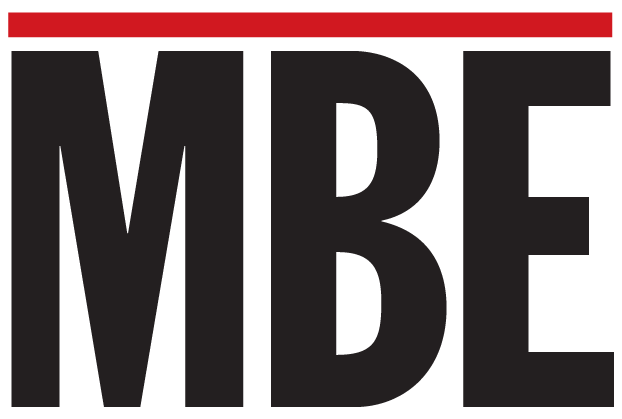
How to harness this critical marketing metric
The sheer number of metrics available to a marketer in 2024 can be overwhelming. Not all are created equal, but one crucial metric often flies under the radar: Share of Voice. SOV can significantly enhance your competitive analysis. This often-overlooked measurement can provide a comprehensive view of your brand’s market presence, helping you understand how well your marketing efforts are resonating compared to your competitors’.
A closer look at this often overlooked and misunderstood metric is warranted.
What is Share of Voice?
To understand SOV, imagine a bustling marketplace where vendors vie for attention. Each one is trying to outshout the others to attract customers. SOV serves as a strategic tool to gauge your brand’s presence in this noisy marketplace relative to competitors. Essentially, it measures how effectively your brand stands out amid the competition.
There are different types of SOV, each relevant to various aspects of your marketing strategy:
- Earned Media SOV: This reflects your brand’s share of mentions in news outlets, blogs, and other editorial content—typically a focus for PR teams. For instance, if you work in healthcare marketing, Earned Media SOV could help you understand how often your medical services are mentioned in health publications compared to other providers.
- Social Media SOV: This measures your brand’s presence across social platforms, crucial for social media teams. In financial marketing, Social Media SOV might reveal how your investment services stack up against competitors in conversations across Twitter, LinkedIn, or Facebook.
- Paid Media SOV: This is the traditional concern of marketers, focusing on the visibility your paid ads achieve relative to your competitors. For higher education marketing, Paid Media SOV helps determine how often your institution’s ads appear compared to those of other colleges in digital ad spaces.
By understanding and leveraging these different types of SOV, you can gain a more comprehensive view of your brand’s market presence and adjust your strategies accordingly.
Why Does SOV Matter?
SOV is more than just a metric; it’s a gateway to invaluable insights and strategic advantages. Here’s why it should matter to you:
- Strategic insights: SOV provides crucial insights into industry conversations and perceptions. It illuminates who’s discussing your brand and how it compares to competitors, offering strategic advantages for market positioning and growth. Understanding these insights helps you prioritize your efforts and focus on areas that will give your brand the most significant boost in visibility and engagement.
- Channel allocation: From social media platforms to search engine results pages (SERPs), paid advertising spaces, and even earned media channels, each type of SOV provides unique insights. Social media SOV highlights where your brand stands in digital conversations, while SERP SOV focuses on your visibility in organic search results. Paid advertising SOV, on the other hand, measures the effectiveness of your ad spend in securing visibility. Together, these insights help you make informed decisions about where to allocate your resources for maximum impact.
How Do You Calculate SOV?
Calculating SOV is straightforward but powerful: Depending on the type of SOV you’re interested in — paid media, earned media, or social media — the approach varies slightly:
- Paid Media SOV:
- Formula: SOV = (Your Brand’s Paid Impressions / Total Market Paid Impressions) × 100%
- This calculation focuses on your brand’s share of paid advertising impressions compared to the total market, offering insight into the effectiveness of your paid media strategies.
- Earned Media SOV:
- Formula: SOV = (Your Brand’s Mentions / Total Industry Mentions) × 100%
- Earned media SOV measures your brand’s share of editorial mentions, press coverage, and non-paid content within your industry. It’s particularly valuable for understanding PR efforts and organic brand visibility.
- Social Media SOV:
- Formula: SOV = (Your Brand’s Social Mentions / Total Social Mentions in Your Industry) × 100%
- Social media SOV calculates your brand’s share of social media conversations, including posts, shares, and comments. This metric is crucial for gauging your brand’s presence and engagement on social platforms.
Each of these calculations provides a unique lens through which to view your brand’s market position, helping you track performance and adjust strategies based on solid data. For instance, if your financial services firm is mentioned 500 times in a month on social media and the total mentions of all financial firms are 5,000, your social media SOV is 10 percent. This insight reveals where you stand in the competitive landscape and informs future actions.
What Are The Key Metrics for SOV Analysis?
Analyzing different types of SOV involves tracking several key metrics across different tools. Here are some of the most important ones:
- Total media exposure: Track your brand’s presence across diverse media channels—from traditional outlets to digital platforms—to assess overall visibility and reach. This comprehensive view helps you understand where your brand stands.
- Geographical insights: Identify regions where your brand enjoys higher SOV to tailor localized marketing strategies and capitalize on regional market trends effectively. Knowing where your brand is most talked about can help you focus your marketing efforts more effectively.
- Publication reach: Evaluate the impact of your brand’s visibility in leading publications and industry-specific outlets to refine media placement strategies and enhance SOV. Ensuring that your brand appears in the right publications can significantly enhance your credibility and reach.
These metrics provide a comprehensive view of your brand’s performance and help you make informed decisions about your marketing efforts.
How Can SOV Be Strengthened?
Enhancing your SOV requires a multifaceted approach. Measuring the different kinds of SOV across different tools may sound daunting, but all are important to creating or improving brand awareness. With that in mind, here are some key strategies to consider:
- Social media mastery: Engage authentically, curate compelling content, and foster meaningful interactions across social platforms to amplify your brand’s digital footprint and SOV. Sharing relevant and engaging content consistently can significantly boost your visibility.
- SEO excellence: Implement targeted keywords and SEO best practices to enhance organic visibility and improve your brand’s position in search engine rankings, thereby increasing SOV. Effective SEO strategies can ensure that your brand is easily discoverable online.
- Paid media strategy: Invest strategically in paid campaigns to secure prominent digital real estate and maximize brand exposure in competitive market landscapes. Well-placed ads can drive immediate traffic and boost brand recognition.
- Thought leadership initiatives: Establish your brand as an industry authority by sharing valuable insights, thought-provoking content, and expert opinions that resonate with your target audience. Publishing whitepapers, blog posts, and participating in industry events can help cement your reputation as a leader.
By applying these strategies, you can systematically boost your SOV, making your brand more visible and influential in the marketplace.
Competitive analysis and benchmarking
Like many other aspects of business and marketing strategy, understanding your competitive landscape is essential to improvement and growth. Here are some metrics and ideas to help improve your competitive edge.
- AVE (Advertising Value Equivalent): Measure the estimated value of your brand’s visibility compared to competitors, providing insights into the ROI of marketing investments. This helps you understand the financial impact of your visibility.
- SOV by AVE: Benchmark your SOV against industry peers to identify growth opportunities, refine marketing strategies, and enhance market share. Comparing your SOV with competitors gives you a clearer picture of your market position.
- Media mix optimization: Optimize media investments across industry publications, news outlets, and niche blogs to diversify your brand’s reach and impact on target audiences. A well-balanced media mix ensures that you reach your audience through multiple channels.
Competitive analysis and benchmarking help you understand where you stand in the market and how you can improve your position.
How Do You Visualize SOV Success?
Visualizing your SOV success is also important for tracking progress and communicating results. Here are some ways we visualize success:
- Historical trends: Analyze SOV trends over time to track performance, identify seasonal variations, and align marketing initiatives with long-term strategic goals. Understanding these trends can help you plan your marketing efforts more effectively.
- Geospatial mapping: Visualize your brand’s regional presence and identify emerging markets for targeted expansion strategies based on SOV insights and regional consumer behavior. This helps in identifying new opportunities and potential areas for growth.
- Spokesperson impact: Evaluate the influence of key spokespersons or brand ambassadors on enhancing SOV and credibility within specific market segments. Assessing the impact of your spokespeople helps you understand their value and influence.
Visual tools and data visualization techniques can make it easier to interpret your SOV metrics and share your findings with stakeholders.
What Are The Steps For Implementing SOV Analysis?
Ready to dive into SOV analysis? Here’s how to get started:
- Define your objectives: Clarify what you aim to achieve with SOV analysis. Whether it’s increasing brand awareness, monitoring market share, or evaluating campaign effectiveness, having clear objectives sets the foundation for actionable insights.
- Choose your tools: Select SOV monitoring tools that align with your budget and needs. Platforms like Meltwater, Cision, and Brandwatch are industry leaders offering robust features for tracking mentions and analyzing market share.
- Set benchmark metrics: Establish baseline metrics for your brand’s current SOV across relevant channels. Benchmark against competitors to identify opportunities for growth and improvement.
- Monitor and analyze: Regularly monitor your brand’s mentions and visibility across different media channels. Analyze trends, identify patterns, and adapt strategies to capitalize on emerging opportunities or mitigate risks.
- Iterate and optimize: Use insights gained from SOV analysis to refine your marketing strategies continuously. Adjust resource allocation, content strategies, and channel investments to maximize SOV impact and achieve long-term growth objectives.
Following these steps will help you integrate SOV analysis and insights into your marketing strategy. Mastering SOV isn’t just about visibility; it’s about strategic foresight and competitive advantage in the marketplace. By leveraging SOV insights effectively, you empower your marketing efforts to resonate more profoundly with your audience, driving sustained brand growth and market leadership.












